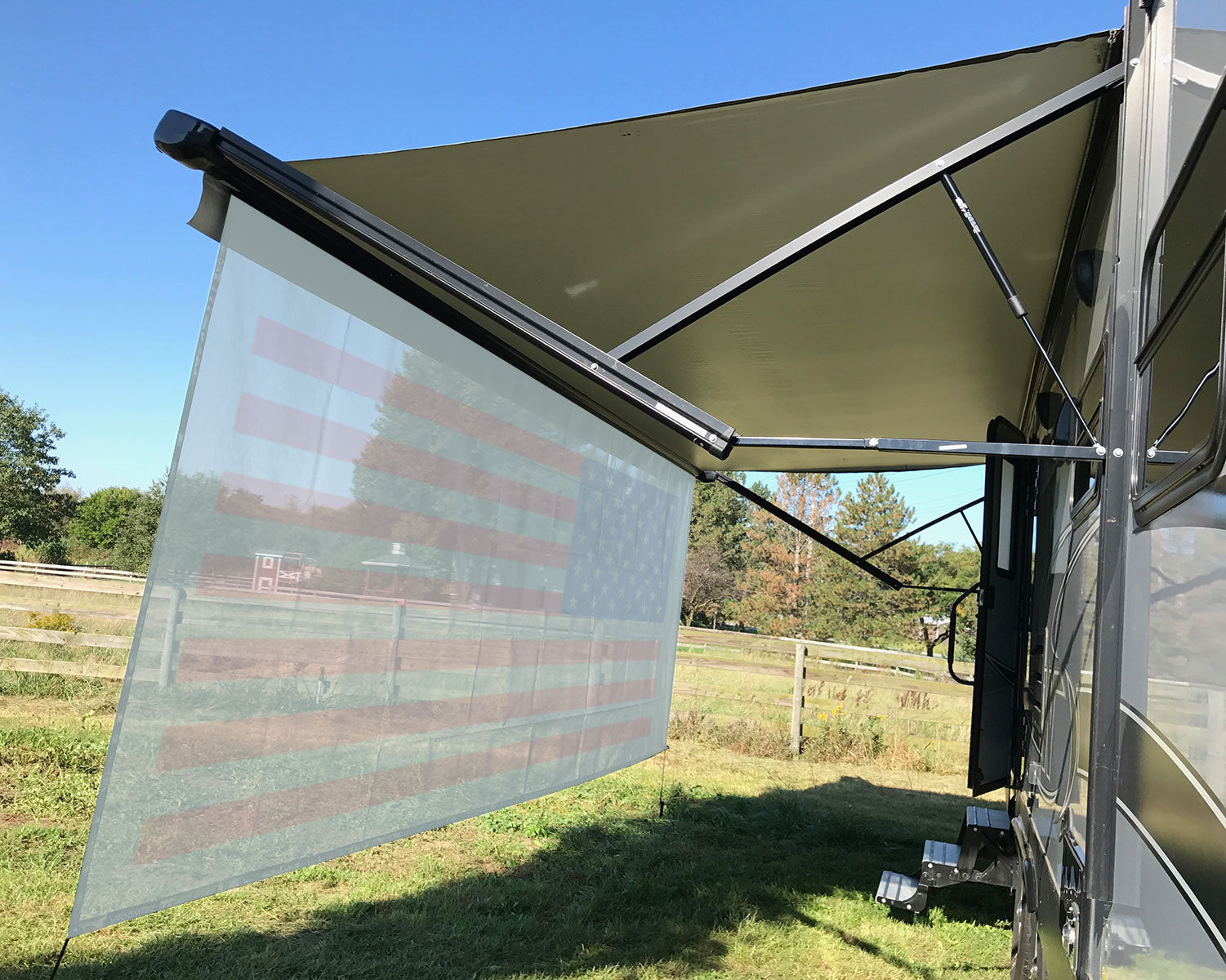RV awnings are a fantastic addition to your recreational vehicle, providing shade and shelter from the elements while you enjoy the great outdoors. However, like any other component of your RV, awnings can encounter issues that require repair or maintenance. In this guide, we’ll explore some common problems with RV awnings and provide practical tips for fixing them.
1. Fabric Tears and Rips: Patching Up the Damage
One of the most common issues RV owners face with their awnings is tears or rips in the fabric. These can occur due to various reasons, including wind damage, improper storage, or general wear and tear. To repair fabric tears, start by cleaning the damaged area with a mild soap and water solution. Once dry, apply a patch specifically designed for awning fabric, ensuring it completely covers the tear and adheres securely. For larger tears, you may need to seek professional repair services or consider replacing the entire awning fabric.
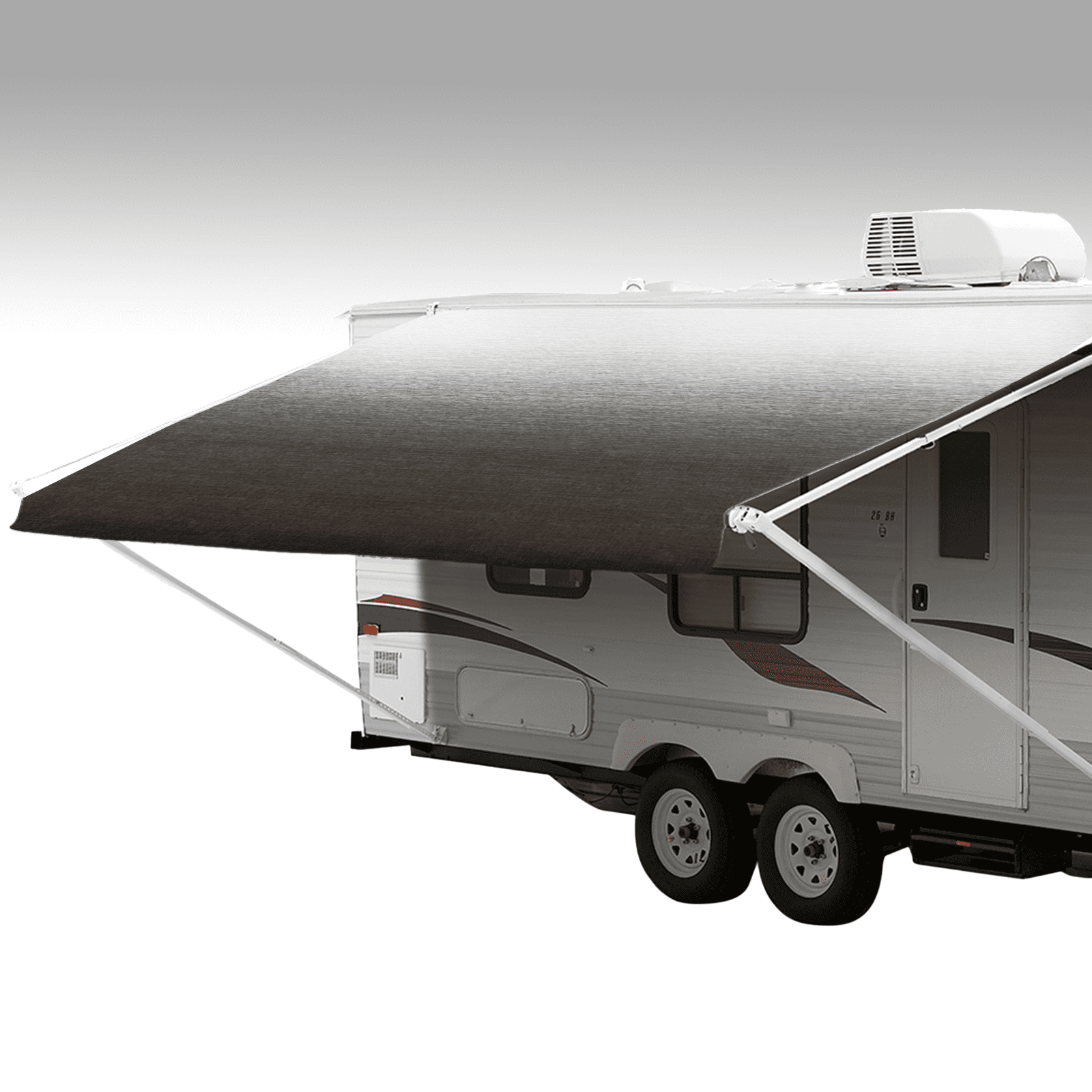
2. Bent or Damaged Arms: Straightening Things Out
The arms of your RV awning are crucial for providing support and stability. If they become bent or damaged, it can affect the functionality of the awning and compromise its integrity. To fix bent arms, carefully examine the extent of the damage and attempt to gently straighten them using pliers or a mallet. Be cautious not to apply too much force, as this could cause further damage. If the arms are severely bent or broken, it’s best to replace them entirely to ensure proper operation and safety.
3. Awning Won’t Retract: Troubleshooting the Mechanism
Another common issue RV owners encounter is difficulty retracting their awning. This can be frustrating, especially when you’re ready to hit the road or set up camp. Begin by inspecting the awning mechanism for any obstructions or debris that may be preventing smooth operation. Lubricate moving parts with silicone spray to reduce friction and facilitate easier retraction. If the awning still won’t retract, check the tension settings on the arms and adjust them as needed. In some cases, the motor or spring mechanism may require professional repair or replacement.
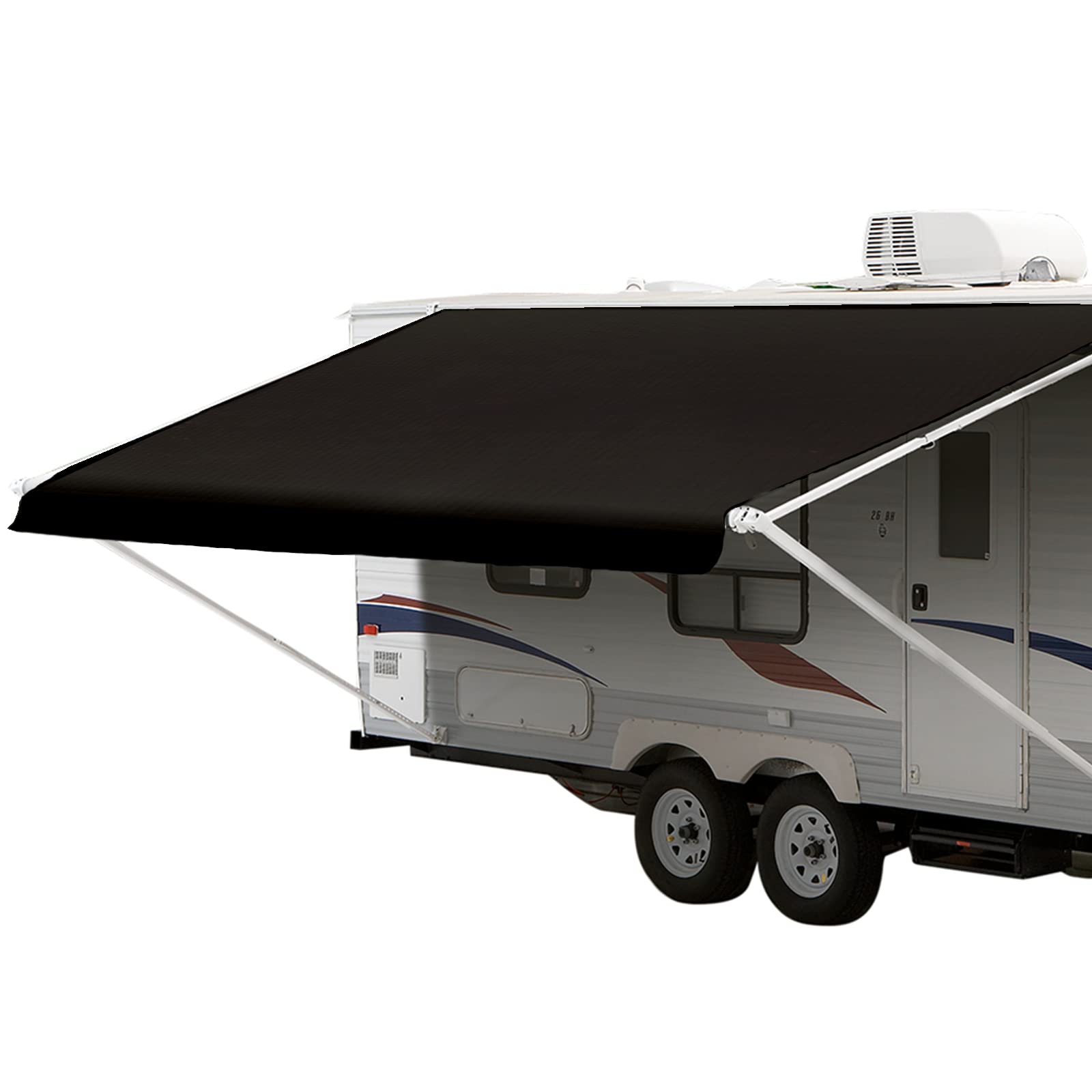
4. Awning Sags or Sways: Reinforcing Stability
A sagging or swaying awning can be both unsightly and unsafe, particularly in windy conditions. To address this issue, start by checking the tension of the support arms and adjusting them to ensure proper alignment and stability. Additionally, consider installing support braces or tie-down straps to reinforce the awning and prevent excessive movement. Regularly inspect and tighten fasteners and hardware to maintain structural integrity and minimize the risk of sagging or swaying.
5. Water Pooling: Preventing Potential Damage
Water pooling on the surface of your RV awning can lead to premature wear and tear, mold growth, and structural damage if left unaddressed. To prevent water pooling, ensure the awning is properly angled to allow for water runoff. Adjust the support arms as needed to create a slight slope from one end of the awning to the other. You can also install aftermarket awning deflappers or tensioners to help keep the fabric taut and facilitate water drainage.
6. Stuck or Jammed Rollers: Freeing Up Movement
If the rollers of your RV awning become stuck or jammed, it can hinder the retracting and extending process, causing frustration and inconvenience. Begin by inspecting the rollers for any debris, dirt, or corrosion that may be impeding movement. Clean the rollers thoroughly and apply a silicone lubricant to promote smooth operation. Gently tap the rollers with a rubber mallet to loosen any stubborn debris or corrosion. If the rollers are severely damaged or corroded, they may need to be replaced to restore proper functionality.
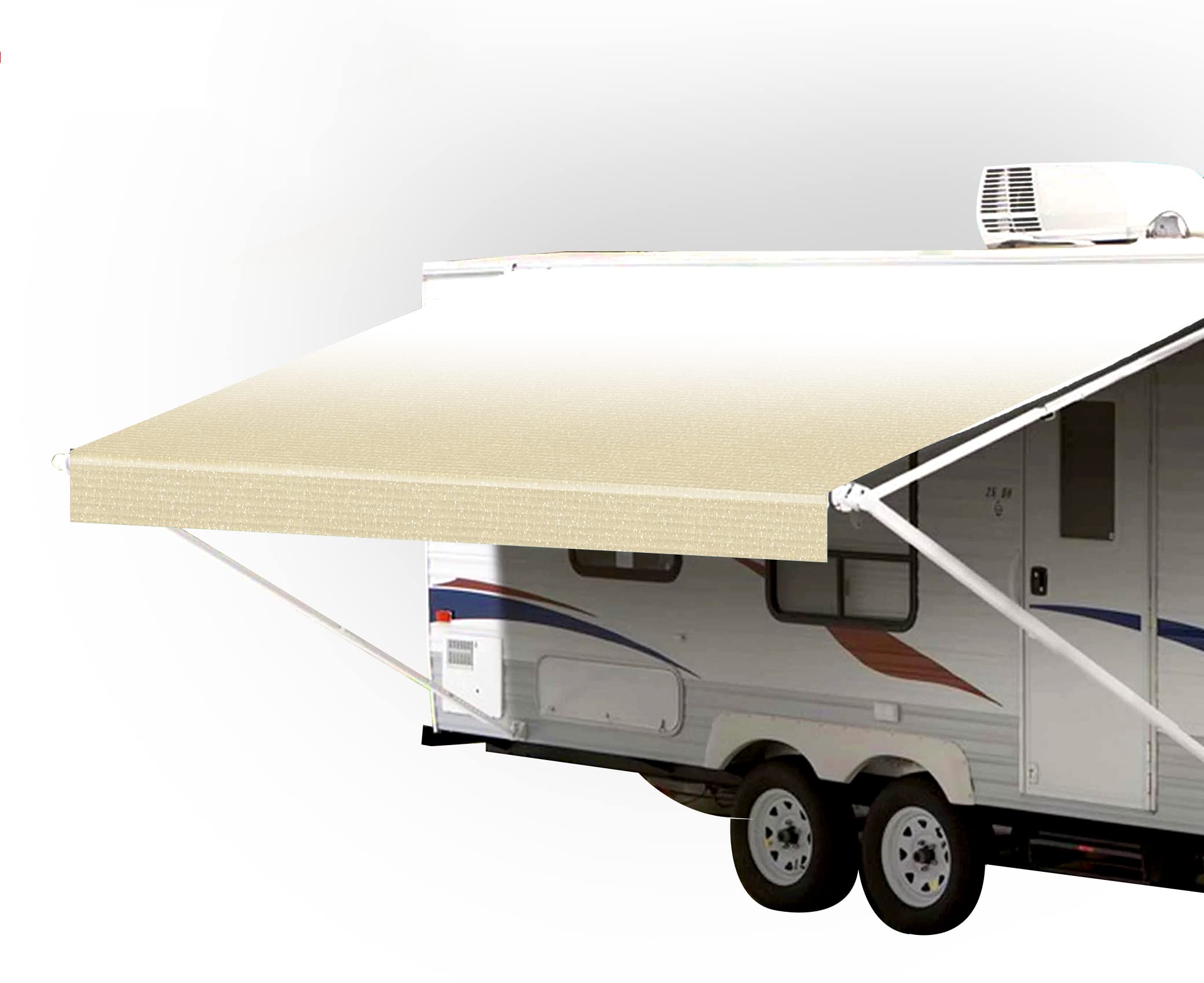
7. Faded or Discolored Fabric: Reviving Aesthetic Appeal
Over time, exposure to sunlight and harsh weather conditions can cause the fabric of your RV awning to fade or become discolored, detracting from its aesthetic appeal. To revive the appearance of your awning fabric, use a specially formulated awning cleaner and protectant to remove dirt, stains, and UV damage. Follow the manufacturer’s instructions for application, and consider applying a fabric sealant or UV protectant to prolong the lifespan of the fabric and maintain its vibrant color.
8. Frayed or Damaged Cords: Ensuring Secure Attachment
The cords or straps that secure your RV awning to the vehicle can experience wear and tear over time, leading to fraying or damage. Inspect the cords regularly for signs of wear, and replace any damaged or frayed cords immediately to prevent accidents or structural damage. Ensure the cords are securely attached to both the awning and the RV using appropriate fasteners and hardware. Consider upgrading to high-quality, heavy-duty cords or straps for added durability and peace of mind.
9. Awning Lights Not Working: Checking Electrical Connections
If your RV awning is equipped with integrated lighting, you may encounter issues with the lights not working properly. Begin by checking the electrical connections and wiring to ensure they are securely connected and free from damage. Test the lights by replacing bulbs or fuses as needed, and inspect the light fixtures for any signs of corrosion or water damage. If the lights still aren’t functioning, consult the owner’s manual for troubleshooting tips or seek assistance from a qualified RV technician.
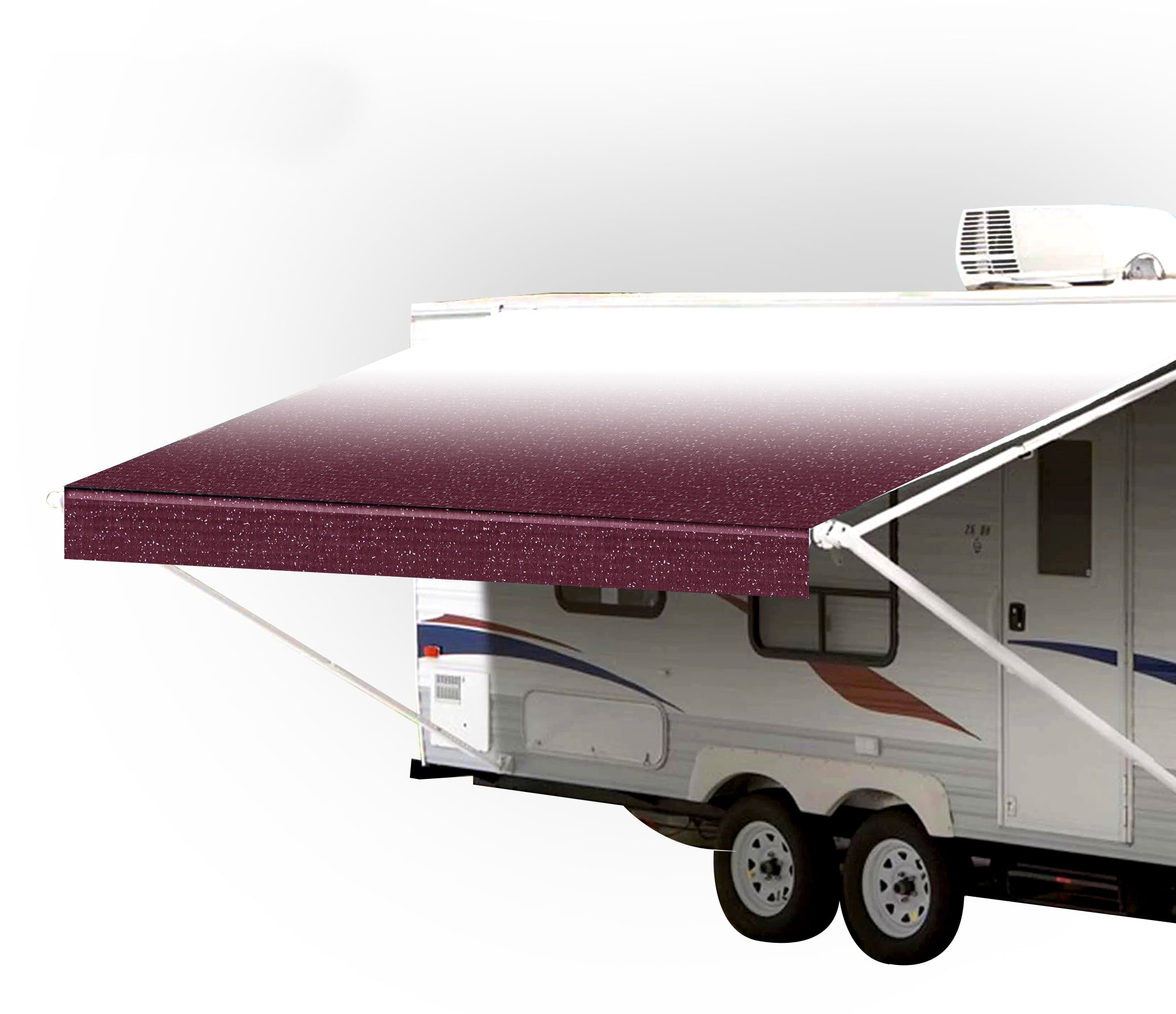
10. Professional Repair Services: When to Seek Help
While many common issues with RV awnings can be addressed with DIY repairs and maintenance, there are times when professional assistance may be necessary. If you encounter complex mechanical issues, severe damage, or safety concerns with your awning, it’s best to consult a certified RV technician or awning repair specialist. They have the knowledge, experience, and equipment to diagnose and repair a wide range of awning problems safely and effectively, ensuring your continued enjoyment of outdoor adventures with your RV.
11. Wind Damage: Reinforcing Awning Stability
Strong winds can pose a significant threat to your RV awning, potentially causing damage or even complete destruction if not properly secured. To protect against wind damage, consider investing in awning tie-downs or stakes to anchor the awning securely to the ground. Additionally, retract the awning during periods of high wind or inclement weather to minimize the risk of damage. If you’re camping in a windy area, position your RV to provide natural windbreaks, such as trees or buildings, to reduce exposure to strong gusts.
12. Regular Maintenance: Extending Awning Lifespan
Like any other component of your RV, regular maintenance is key to extending the lifespan of your awning and ensuring reliable performance. Schedule routine inspections to check for signs of wear and damage, such as loose hardware, frayed fabric, or corroded components. Clean the awning fabric regularly with a mild detergent and water to remove dirt, debris, and stains that can contribute to deterioration. Lubricate moving parts, such as hinges and rollers, to reduce friction and promote smooth operation. By staying proactive with maintenance, you can prevent minor issues from escalating into costly repairs and enjoy uninterrupted use of your RV awning for years to come.

13. Awning Replacement: Knowing When It’s Time
Despite your best efforts to maintain and repair your RV awning, there may come a time when replacement is the most practical solution. Signs that it may be time to replace your awning include extensive fabric damage, irreparable mechanical issues, or outdated design and functionality. When selecting a new awning, consider factors such as fabric quality, UV resistance, ease of operation, and compatibility with your RV model. Consult with an RV specialist or awning manufacturer to explore your options and ensure a seamless installation process.
Conclusion
Maintaining and repairing your RV awning is essential for preserving its functionality, appearance, and safety. By following these practical tips and troubleshooting common issues, you can address minor problems promptly and prevent more significant issues from arising. Remember to perform regular inspections, cleanings, and maintenance to keep your RV awning in top condition and ready for your next adventure on the open road.
